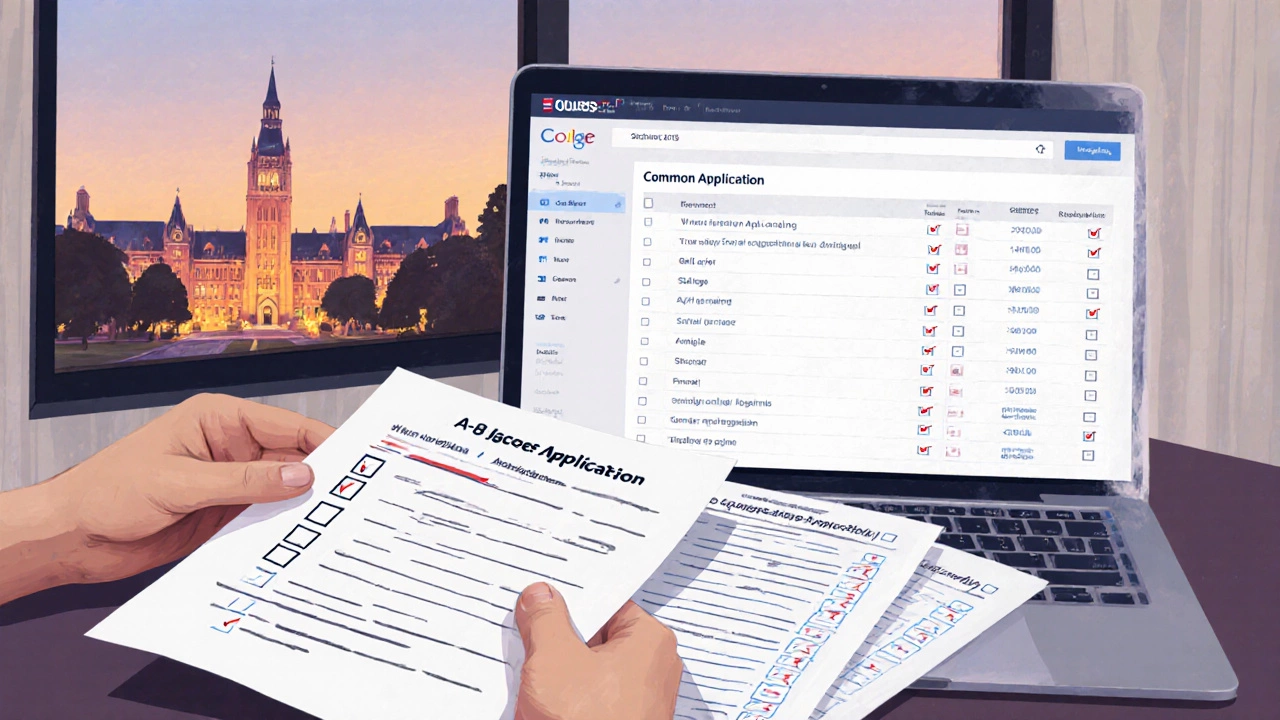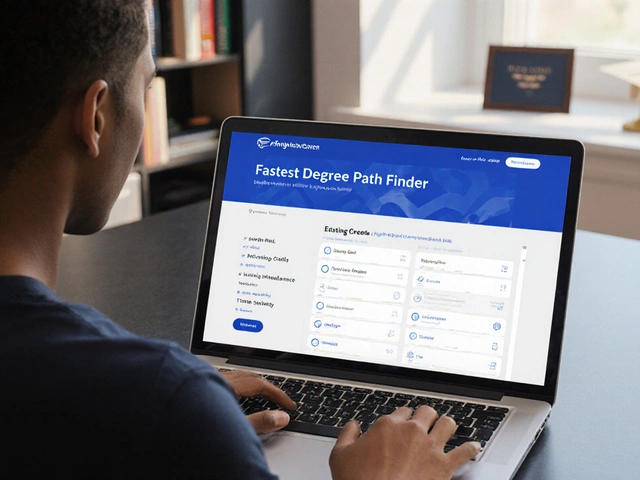A-Level to US GPA Converter
Convert your UK A-Level grades to the US GPA scale used by American universities. This tool helps you understand how your qualifications will be evaluated.
Anyone who’s finished GCSEs and heard about A Levels is a two‑year pre‑university qualification offered by exam boards such as Edexcel, AQA and OCR will eventually wonder how American colleges view that achievement. The short answer: the closest U.S. equivalents are the Advanced Placement (AP) program, the International Baccalaureate (IB) Diploma, and, in a broader sense, a strong high‑school transcript bolstered by SAT or ACT scores. Below we break down each path, compare the key features, and explain what you need to present on a U.S. college application.
Why the comparison matters
U.S. admissions officers need a way to translate UK grades into their own grading scale. They look for depth of study, rigor, and evidence that a student can handle college‑level work. Knowing the American counterpart helps you choose the right courses, plan your exam timetable, and craft a compelling personal statement that speaks the language of U.S. universities.
Quick Takeaways
- AP exams mirror A‑Level subject‑by‑subject depth; each AP score can earn college credit.
- IB Diploma provides a holistic, two‑year programme similar to the A‑Level structure but with extra components (TOK, EE, CAS).
- A solid U.S. high school diploma paired with high SAT/ACT scores can match A‑Level performance if you take plenty of honors or AP classes.
- University admissions committees usually convert A‑Level grades to the U.S. GPA scale (A* = 4.0, A = 3.7, B = 3.0, etc.).
Advanced Placement (AP) - The most direct parallel
When you hear the phrase Advanced Placement (AP) is a program run by the College Board that offers college‑level courses and exams to high‑school students, think of it as the U.S. answer to taking a single A‑Level subject. Each AP course culminates in a standardized exam scored from 1 to 5. Scores of 4 or 5 often translate into college credit or placement, mirroring how an A‑Level grade of A or A* can give you advanced standing in the UK.
Key AP facts (2025 data):
- Over 30 subjects, ranging from Calculus AB/BC to World History.
- Exam cost: US$95 per subject (with fee reductions for low‑income students).
- Average score: 2.85 across all subjects.
- More than 2.8 million students took at least one AP exam in 2024.
International Baccalaureate (IB) - A broader, internationally recognised route
The International Baccalaureate (IB) Diploma is a two‑year curriculum that combines rigorous academic study with a focus on personal development. While not a perfect match for A‑Levels, the IB’s requirement to take six subjects (three at higher level, three at standard level) plus the Theory of Knowledge (TOK) essay, Extended Essay (EE), and CAS (Creativity, Activity, Service) creates a comparable workload to three or four A‑Level subjects.
How IB scores stack up against A‑Levels:
| Metric | A‑Levels | IB Diploma | AP Exams |
|---|---|---|---|
| Typical age | 16‑18 | 16‑19 | 16‑18 |
| Number of subjects | 3‑4 (subject‑specific) | 6 (3 HL, 3 SL) | 1‑5 per exam |
| Exam format | Written papers, some coursework | Exams + internal assessment + EE/TOK | Single‑hour written exam |
| University credit | Varies by UK university (often direct entry) | Accepted for credit at many U.S. schools | Credit awarded for 4‑5 scores |
| Grading scale | A*-E (A* = 100%) | 1-7 (7 = 100%) | 1-5 (5 = 100%) |
U.S. High School Diploma + SAT/ACT - The broad‑brush approach
In the United States, the baseline credential is the high‑school diploma. Colleges look at GPA, the rigor of coursework (honors, AP, dual‑enrollment), and standardized test scores (SAT or ACT). If you’re a UK student applying from abroad, you can combine your A‑Level results with a strong SAT/ACT performance to meet the same expectations as a U.S. student with a mix of AP and honors classes.
Typical conversion used by U.S. admissions:
- A* → 4.0 GPA (or 97-100% in the U.S.)
- A → 3.7 GPA (90-96%)
- B → 3.0 GPA (80-89%)
- C → 2.0 GPA (70-79%)
Most selective colleges require a SAT score of 1450 + (out of 1600) or an ACT composite of 33 +. Pair that with A‑Levels in core subjects, and you’re on a level playing field with top U.S. applicants.

How to present A‑Levels on a U.S. application
- Translate grades. Use the conversion table above or the one provided by the college’s admissions office.
- Include exam details. List the exam board (e.g., Edexcel, AQA) and the specific subject codes.
- Provide context. Write a brief explanation in the application’s additional information section: mention the two‑year study period, the depth of the syllabus, and any coursework involved.
- Show comparability. If you also took AP exams, list both scores side‑by‑side to illustrate equivalence.
- Submit official documents. Have your school send the A‑Level transcripts directly to the college via the Common Application or the school’s portal.
Common pitfalls and how to avoid them
Assuming one A‑Level equals one AP. While the subject matter overlaps, the assessment styles differ. A‑Levels often involve longer essays and deeper theoretical work, whereas AP exams are shorter and more multiple‑choice focused. Highlight the essay component in your personal statement.
Neglecting the SAT/ACT. Even with stellar A‑Level results, many U.S. schools still require a standardized test score. Allocate study time early and consider official practice tests from the College Board or ACT.org.
Over‑loading your transcript. U.S. colleges appreciate balanced profiles. Pair academic rigor with extracurriculars, community service, or work experience - just as the IB’s CAS does.
Case study: From A‑Levels to a U.S. Ivy League
Emma, a student from Manchester, completed three A‑Levels: Mathematics (A*), Physics (A), and English Literature (A). She also sat for the SAT (1520) and took two AP exams - Calculus BC (5) and Chemistry (4). Her University of Pennsylvania application listed the A‑Level grades, the AP scores, and a short note: “A‑Levels are two‑year intensive courses covering content equivalent to first‑year university modules in the UK.” Admission officers noted the rigorous math background and awarded her credit for both AP Calculus and A‑Level Mathematics, letting her skip the introductory calculus sequence. Emma’s example shows that coupling A‑Levels with AP and a strong SAT creates a compelling, comparable package.
Final checklist before you apply
- Confirm which U.S. colleges accept A‑Level grades directly.
- Prepare official transcripts and, if needed, a conversion chart.
- Take SAT or ACT and aim for scores above the school’s median.
- Consider adding one or two AP exams to demonstrate U.S. curriculum familiarity.
- Write a concise explanation of the A‑Level system in the application’s essay or additional information section.

Do U.S. colleges treat A‑Levels the same as AP exams?
Most selective schools view A‑Levels as evidence of subject depth comparable to AP. They usually convert A*-A grades to a 4.0‑3.7 GPA range and may award college credit if the subject aligns with the program of study.
Can I apply to a U.S. university with only A‑Levels and no SAT?
A few schools have test‑optional policies, but the majority still require SAT or ACT scores. If you skip the test, your A‑Level record must be exceptionally strong, and you should highlight any AP or IB work you’ve done.
Is the IB Diploma a better American equivalent than A‑Levels?
IB offers a broader curriculum with a built‑in international framework, which many U.S. schools recognize more readily. However, the depth of three A‑Levels can match or exceed IB HL courses if the subjects align with your intended major.
How many AP exams should I take if I already have A‑Levels?
One or two AP exams in core subjects (e.g., Calculus, Chemistry) help U.S. admissions committees see that you can handle the American testing style. Choose APs that complement your A‑Level subjects rather than duplicate them.
What documentation do I need to submit?
Official A‑Level transcripts from your exam board, any AP score reports, SAT/ACT score reports, and a brief explanatory note about the UK qualification system. Upload the documents to the Common Application or the school’s portal as directed.






